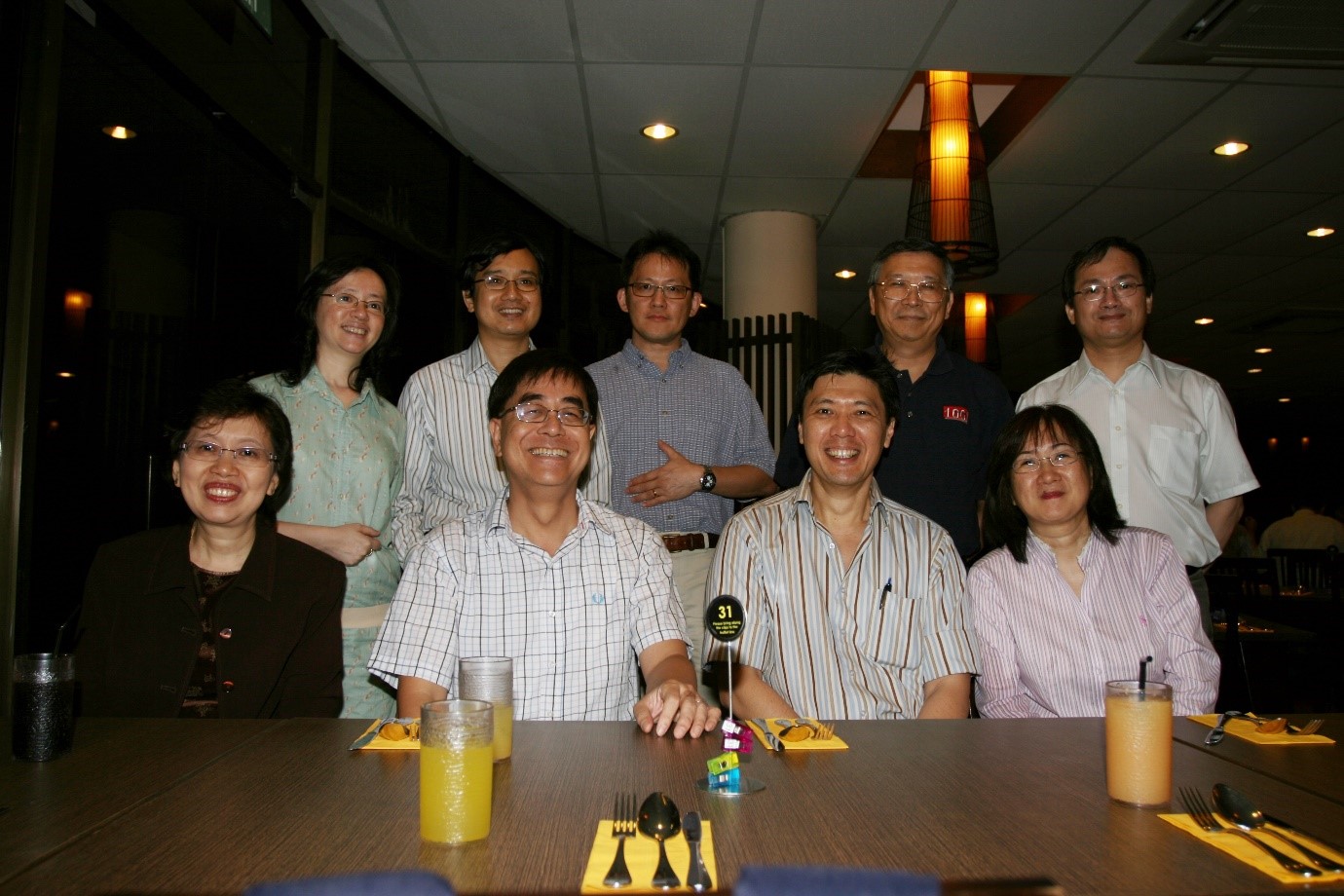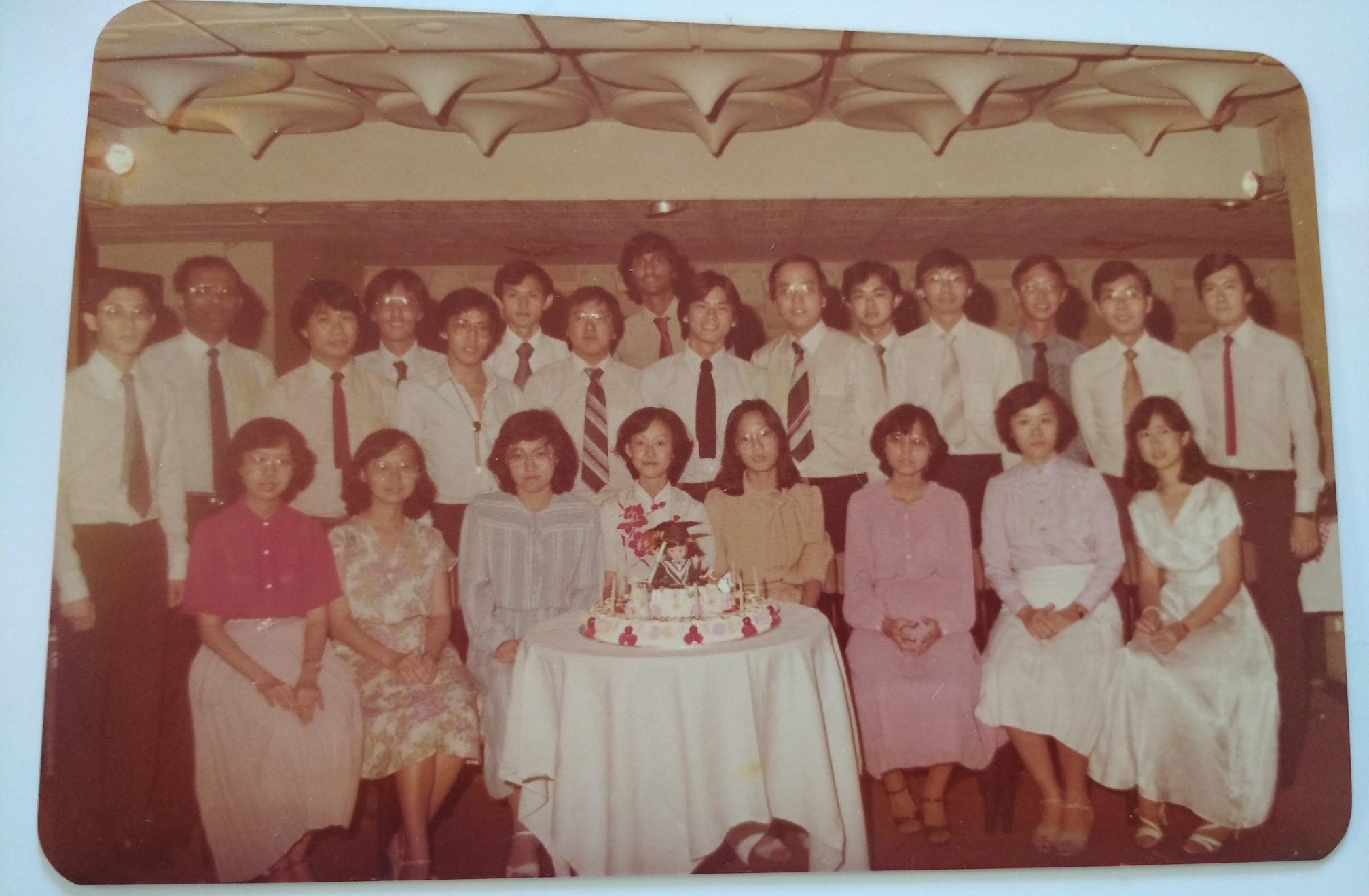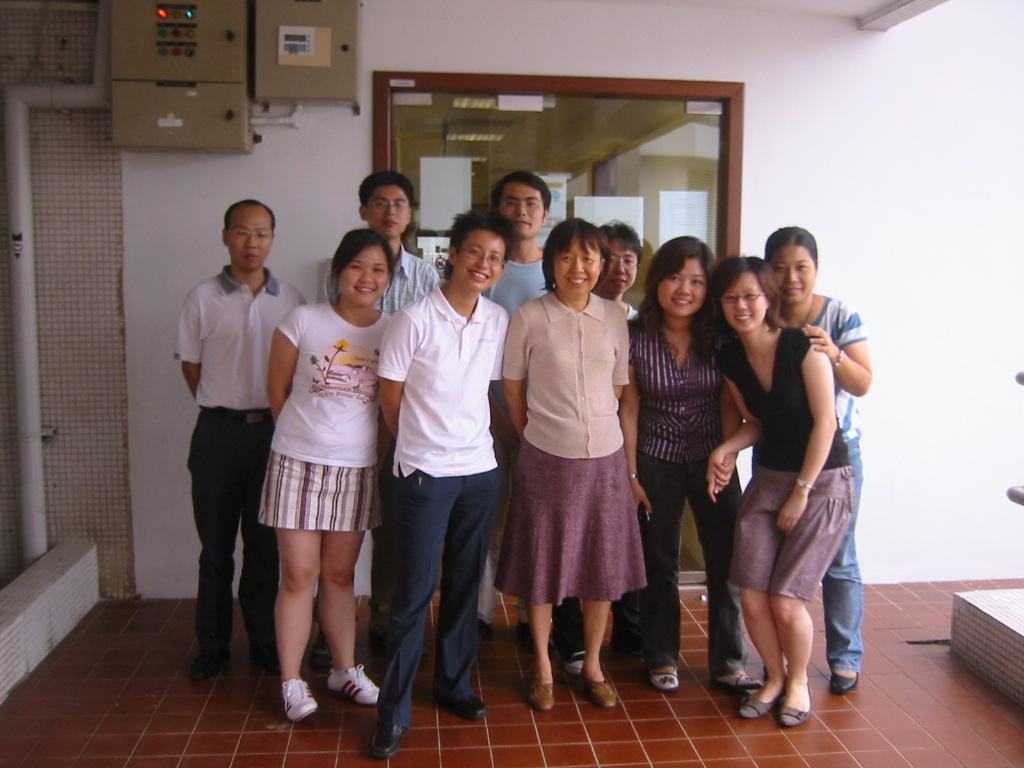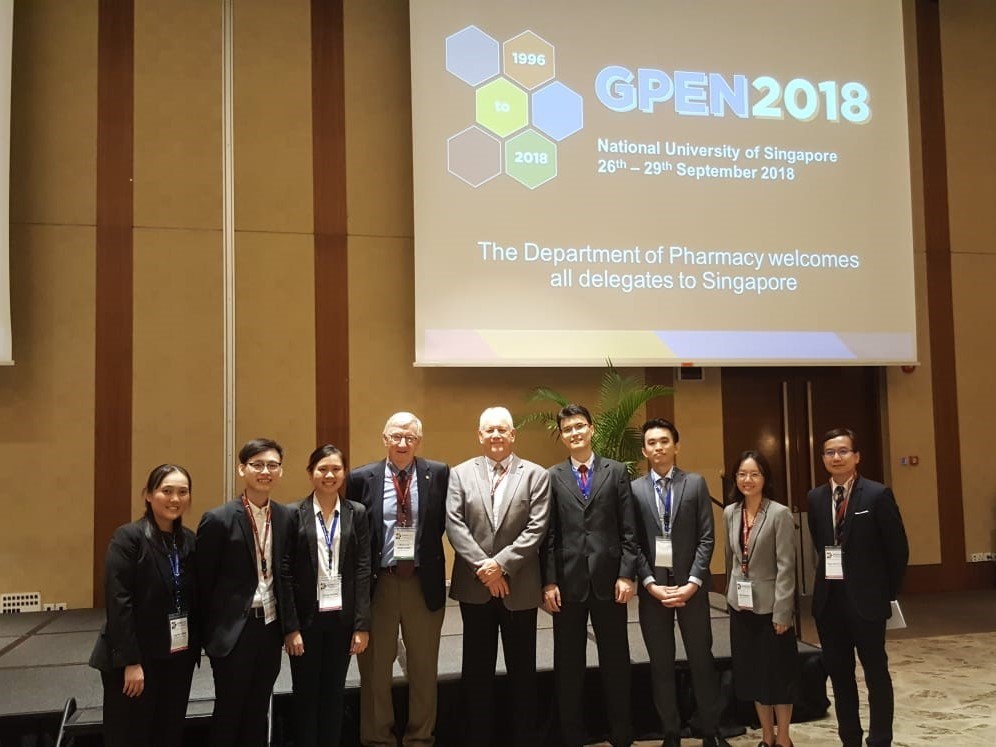A Trip Down Memory Lane
by Lloyd Wei Tat Tang (Class of 18’ and 23’)
In this issue, we celebrate the retirement of Professor Paul Ho, A/Prof Go Mei Lin and A/Prof Paul Heng. All three ought to be familiar faces to the NUS Pharmacy alumni – having been in the department for 29, 43 and 38 years, respectively. We caught up with Prof Ho and A/P Go before their retirement to look back and reminisce on some rather eventful moments in their long academic careers. A/P Heng was unfortunately unavailable during this period but we are hopeful to hear his stories some day!

A/Prof Go with her Ph.D. student Dr Sim Meiyi (left). By a happy coincidence, Dr Sim’s husband Mr Guo Jiashen (right) graduated with M.Sc. (Pharmacy) in the same ceremony.
Thank you both for being here with us today, could you share with the readers of PharmConnect a key highlight of your career with the department?
A/Prof Go Mei Lin (GML): That would be when I graduated my first PhD student. It was the first time I had ever supervised a graduate student and the weight of responsibility was heavy on my shoulders – not only the research bit but also her adjustment issues (this was the 1990s and she was from China). Fortunately, she was a wonderful student in almost every aspect. She managed to publish well and clinched a post-doctoral position in Kansas University immediately after graduating. Thereafter, she joined the pharma industry specializing in pharmacokinetics – but not medicinal chemistry (!).
Professor Paul Ho (PH): That was when my laboratory started working with this mineral called realgar (arsenic sulfide). It all began when I stumbled upon a crystal of realgar displayed on the shelf at Takashimaya Departmental Store. It looked really beautiful – akin to a ruby. The next day, I returned to my laboratory and discussed with my graduate student as to whether realgar could be fluorescent. My student maintained that it was impossible because the chemical only appears as a red powder. However, I insisted that we attempt to make crystals from the chemical powder. After countless attempts and failures, we decided to approach a colleague in the Department of Chemistry. This collaboration turned out to be rather fruitful and we managed to grow crystals from the chemical powder. Serendipitously, we also noticed that the nanocrystals of realgar come in different sizes and possess different fluorescent colors – features that I would later learn are consistent with quantum dots. In addition to their fluorescent property, the quantum dots could also kill cancer cells. We eventually managed to publish these findings in the Journal of the American Chemical Society (JACS) and Angewandte Chemie which are regarded as some of the most prestigious journals in chemistry. This was one of my most successful scientific stories. Of course, I have far more failures in my research career.
How about a memorable moment or a funny story from your time here?
GML: Funny – no, memorable – yes. That was when I slipped on the wet floor in my office and ended up with a broken femur that took two months to heal. During the recovery phase, I had to use crutches, a walking frame and a wheelchair. Since then, I always learn to watch out for slippery floors.
PH: In my early days at NUS, teaching was our main responsibility. We didn’t have any resources to do research. However, we also had no pressure to do research. The situation was very different from today. For my first teaching duties, I had to teach different subjects. One of them was pharmaceutical technology. The pharmaceutical technology at that time was quite different from the pharmaceutical technology today. It was more akin to pharmaceutical engineering. For that particular subject, I had to teach topics like ‘heat exchangers’ and ‘dimensionless analysis for chemical reactors’ – both of which I had never learnt before in my education. However, it was fun to learn all these topics myself and then teach them to students. The students at that time were very hardworking too. Some of them could memorize piles of lecture notes from front to back. Probably because of that, they would never ask lecturers questions like ‘whether these parts were examinable or not’. This is quite different from the ‘smarter’ students of today where they would not waste their time and energy on studying topics which are deemed non-examinable.
Is there an individual who played an important role in your career?
GML: That would be my Ph.D. supervisor, Professor Ngiam Tong Lan. Among the many things he taught me, I still recall two fondly: First, as a student, he made me aware of how I wrote (which was quite bad). I am still very conscious of how I write. Second, as a colleague, he told me “You should read The Economist – it’s got a very well written Science and Technology Section”. And so, I did and have not looked back since.
PH: I too, would like to recount two fond encounters with Prof Ngiam. Due to my previous research experience on drug stability, Prof Ngiam linked me up to hospital pharmacists to work on drug stability studies for their extemporaneous formulations. This collaboration was very fruitful and lasted for many years. At the beginning of 2000, NUS began to emphasize on research and pivot from a teaching university to a research-focused university. Both graduate students and research funding started flowing in. In one year, Prof Ngiam asked us to propose purchasing some equipment for the department. At that time, I proposed to buy an LC-MS instrument that cost a whopping $300,000. I was pretty confident that my proposal would likely be rejected as it required a large upfront monetary investment. To my surprise, Prof Ngiam supported the purchase and we eventually got the approval. Looking back, I am always thankful to his support and guidance to a colleague like me even though we were from different scientific fields. From that time onward, the department continued to purchase many more LC-MS instruments that benefited research of the whole department.

Prof Ho with several colleagues from the department in 2007, he remarks that many of them have already left the department. He also adds that life is just like a singing song either whispering in low chanting or roaring high from the soul. However, the most touching moment is often when the music stops with the song lingering in our hearts (岁月如歌,時而浅唱低吟,時而引吭高歌,但动人心弦,往往在曲终時,遺下的裊裊余音).
Yeah, I totally agree! My PhD research heavily relies on the LC-MS instruments that our department possesses and I am grateful to have them.
Teaching and learning go both ways. In your years of teaching, what have your students taught you?
GML: Many life lessons: that it is important to give second chances and equally important not to overrate academic performance because it does not necessarily correlate with research aptitude.
PH: I have learnt a lot from my students. My learning starts whenever my students ask me questions that I am unable to answer. It is from them that I also understood the meaning of the phrase “no pain, no gain” (“一分耕耘,一分收获”).

NUS Pharmacy Class of 1982 – The first batch of graduating students taught by A/Prof Go.
What do you think students associate you with?
GML: The lecturer who talks too much and too fast.
PH: The lecturer is patient and friendly (I don’t think I have ever scolded any students but if I did and have hurt anyone, I wish to apologise for that).
We have come to the end of this short interview. Do you have any concluding remarks for our readers?
PH: I have witnessed how NUS evolved from a regional teaching university to a global reputable research-focused university in the last twenty years. I can empathize with the challenges faced by students and colleagues today. However, I believe that if we remain true to our original aspiration, nothing but gold can stay at the end. In my concluding chapter in NUS, I would like to extend my gratitude to my colleagues for their friendship and constant support over the years. Additionally, I would like to give thanks to all my former students – without the hard work and contribution from my students, I would not have been able to get to where I am today.
GML: End well.

A/Prof Go with her research group in 2009

Prof Ho in a photo taken at the Globalization of Pharmaceutics Education Network (GPEN) 2018 meeting.
On behalf of the Department and Pharmacy alumni, we thank Prof Ho, A/Prof Go and A/Prof Heng for their long years of dedication and contributions to pharmacy education and research. We wish them a blissful and well-deserved retirement.
Share this article:
Stay connected with NUS Pharmacy!
Receive PharmConnect Newsletters & announcements by NUS Pharmacy.
